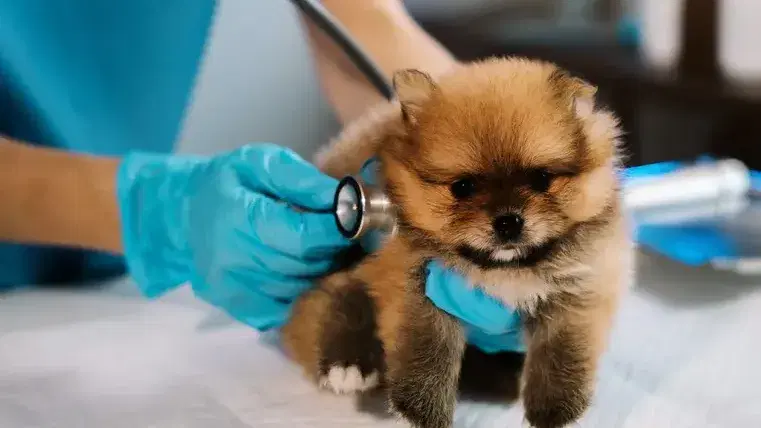Pets are family. They spend every day bringing joy and laughter into our homes, and most are happy to follow their families on any adventure. With all the new experiences and memories pets are around for, it’s normal for their families to want to make sure that their pets are protected and can receive the care they need if they ever become unexpectedly sick or injured.
No one wants to think of their pet being in an accident or falling ill, but even the most attentive pet parents can’t guarantee that this will never happen. So, what can you do to help protect your pet? Is pet insurance the right way to go? In this article, we’ll review 5 differences between pet insurance and pet life insurance and give you guidance on when each might be the right pick for your pet.
5 Differences Between Pet Insurance and Pet Life Insurance
1. Purpose
Pet Insurance: The purpose of pet insurance is to help pet parents with the eligible costs of veterinary expenses that come from life’s unexpected turns. The focus is on the health and well-being of the pet throughout its lifetime.
Pet Life Insurance: The purpose of pet life insurance is to help pet parents cover the costs that can come after a pet has passed away. Pet Life Insurance typically does not cover medical expenses that may occur during the life of the pet.
2. Coverage Type
Pet Insurance: Pet insurance plans typically cover eligible expenses for unexpected accidents and illnesses that may occur during your pet’s life. This may include surgery, hospitalization, or even prescription medication, depending on the provider you choose. Certain providers may also offer preventive care or wellness packages that help pet parents with eligible routine veterinary costs. This coverage may include annual wellness exams, dental cleanings, and vaccinations. Learn more about what pet insurance covers and what pet insurance does not cover.
Pet Life Insurance: Once their pet has passed, pet parents can receive a benefit or reimbursement to cover eligible costs for cremation or burial, but the payout can also be used to replace income that may be lost from the passing of a working animal. Some pet life insurance policies can cover the original cost of purchasing the working animal, or the cost of replacing them.
3. Benefit Payment
Pet Insurance: Generally, when a pet parent receives a bill from their vet, they pay the bill upfront, and then file a claim for reimbursement with their pet insurance provider. Pet insurance plans usually offers reimbursement of 70 – 90% of the cost of an eligible vet bill, and pet parents can typically be reimbursed via cheque or through a direct deposit into their account. Learn more about how pet insurance works.
Pet Life Insurance: When a pet passes away, pet life insurance will typically pay a predetermined benefit amount to the pet parent, to cover end-of-life expenses.
4. Coverage Duration
Pet Insurance: Once you enroll your pet in a pet insurance policy, you will usually need to renew their coverage annually. Different providers may have different limits for how old your pet needs to be before enrollment. Certain providers may also have age limits after which your pet may age out of certain coverage options. If you decide to enroll in a pet insurance policy, look for a provider that will accept your pet as a puppy or kitten, and that does not restrict your pet’s coverage as they age. Learn more about the best age to insure your pet.
Pet Life Insurance: A pet life insurance policy does not need to be renewed annually. This is generally a one-time purchase that is valid for a pre-determined amount of time, often the expected lifespan of the pet, or until a specific age.
5. Premiums and Cost
Pet Insurance: If you decide to enroll your pet in an insurance policy, there are usually two ways to pay your premiums; monthly or annually. Pet insurance premiums can vary depending on many factors, including the age and breed of your pet, the coverage you select, and where you live. Learn more about how pet insurance premiums are calculated.
Pet Life Insurance: Premiums for pet life insurance typically do not work the same way as premiums for pet insurance. When enrolling a pet in pet life insurance, pet parents pay a one-time payment. The cost of the payment is determined by the coverage you choose for your pet. The premium can increase depending on your pet’s age at enrollment, but it is typically a fixed payment.
Key Takeaways
If you have a working pet that helps provide you with income, or if you want to have assistance with funeral costs for your pet, pet life insurance may be the better option. If you’re a pet parent who wants help covering the eligible veterinary expenses during your pets lifetime, or if you want additional financial support in case your pet, unfortunately, becomes unexpectedly sick or injured, opt to enroll your pet in a pet insurance plan.

Creative manager by day, pet enthusiast all the time! After 19 years with my dog (hopefully he wins the award for oldest pet in the world), I enjoy spending my days brainstorming tail-wagging content, and sniffing out the latest trends in the pet world.












